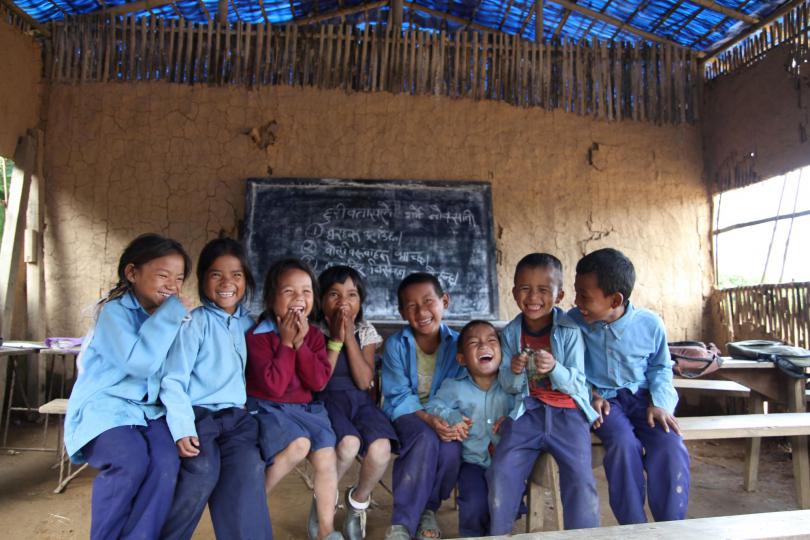Making Nepali media child friendly

Written by: Arun Rai & Ayush Joshi
Nepal’s media landscape has evolved significantly, offering diverse channels for news, opinions and perspectives, but children’s concerns remain in the shadows. Media gatekeepers typically categorise children’s issues as “soft news”, relegating their voices and opinions to the “less newsworthy” realms of art, entertainment and literature. Unfortunately, even these child-focused news spaces have dwindled post-Covid as the Nepali media grapples with economic challenges, leading to the discontinuation of children’s news digests and columns.
A recent study by Save the Children and Child Nepal titled “Child Friendliness in Nepali Media”, reveals that only 2 percent of news coverage in mainstream Nepali media focuses entirely on children’s issues. This research delved into prominent Nepali print and online media outlets, conducting media monitoring to assess the inclusion of children’s issues in news, articles, editorials and interviews. The findings show that a prevailing editorial practice tends to sideline children’s concerns in favour of more attention-grabbing political topics. Media experts point out that newsrooms often adhere to a hierarchical editorial standard, giving more prominence to political news. The research also shows that children’s news often originates from official sources, such as press releases and media briefs, and in-depth investigative pieces are rarely featured. Typically, children-related issues get space only during special events, such as Children’s Day or the International Day of the Girl Child.
What’s more, a review of media reporting on children’s issues exposes a predominant focus on child sex abuse, child exploitation and child marriage. However, some news reporting frequently lacks objectivity, promoting bias and emotional intensity instead of neutral and balanced storytelling. This lack of credibility diminishes the sensitivity and gravity of children’s issues, ultimately doing more harm than good. While media organisations understand the commercial nature of their industry, ethical standards should not be compromised. Newsrooms must uphold strong editorial practices that promote children’s issues without sacrificing objectivity. Media personnel also reveal that children’s issues often get sidelined in mainstream media due to the lack of dedicated reporting beats. When the available human resources in newsrooms are tasked with covering more prominent and mainstream political or developmental stories, there is little room for ongoing issues related to children and their rights.

Media reporting on children’s issues is further hindered by a relatively broad, unnuanced perspective that overlooks intersectionality. Stories often lack consideration for the intersections of gender, ethnicity and marginalisation when discussing children’s issues. A more comprehensive approach is needed to provide nuanced insights into how problems affecting children are interlinked with broader societal challenges. For example, reports on children and climate change rarely seek to explain how climate-induced disasters exacerbate child marriage, as communities marry off their girls to mitigate food insecurity. Furthermore, the stereotypical portrayal of children in media as only “victims” and narratives focusing exclusively on protection and care disregards the active status of children as role models, decision-makers and influencers capable of taking charge of their own agency and contributing to solutions.
Moreover, concerns about media ethics have intensified, as many articles, particularly those addressing sensitive issues like violence, child marriage, child labour and corporal punishment, often disregard children’s privacy. This not only jeopardises their safety and well-being but also exposes them to geo-tagging and social sanctions. News reports sometimes provide explicit, detailed accounts of events, diverting public attention from the core issue and instilling further hopelessness and re-victimisation of children.
The United Nations Convention on the Rights of the Child (UNCRC) of 1989 obliges states to ensure that young people are heard, can exercise freedom of expression, have access to the media and have the right to privacy. It recognises that children, due to their physical and mental immaturity, require special safeguards. Therefore, the media must provide space for children’s voices and prioritise the best interests of the child.
Similarly, Nepal’s constitution of 2015 establishes a framework for child rights, including the best interests of the child (Article 39). The Child-Friendly Media Directives, issued in 2016 by the Nepal Press Council in collaboration with the Federation of Nepali Journalists, emphasise the prominence of children and call on journalists to be sensitive to children’s specific needs when reporting.
It is imperative for journalists covering children’s issues to be well-versed in child rights concepts and reporting standards. Relevant government agencies, such as the National Human Rights Commission (NHRC) at all three governance levels, can play a pivotal role. Organisations like the Federation of Nepali Journalists (FNJ), the Nepal Press Council (PCN), and the National Child Rights Council should collaborate to educate Nepali journalists about the principles and spirit of Child-Friendly Media Directives for a more child-friendly Nepali media. There is a pressing need to consult with children on how the media directives can best ensure their voices and issues and how they wish their news or issues to be reported by the media.

The media’s vital role in promoting children’s rights will be realised if it invests resources in ongoing political, social, and economic impacts on children’s lives. This, in turn, can sensitise the government and influence policies, ensuring children’s best interests. Further, the lack of such media reporting creates a conundrum of unrealistic actions, which not only stereotype children but also deprive them of their rights. Hence, newsrooms must be responsible, accurate, fair and aligned with CRC principles, human rights standards, laws and directives while reporting children’s issues. How society perceives children and their relationships directly depends on the media’s portrayal of children.
The ope-ed was originally published in The Kathmandu Post